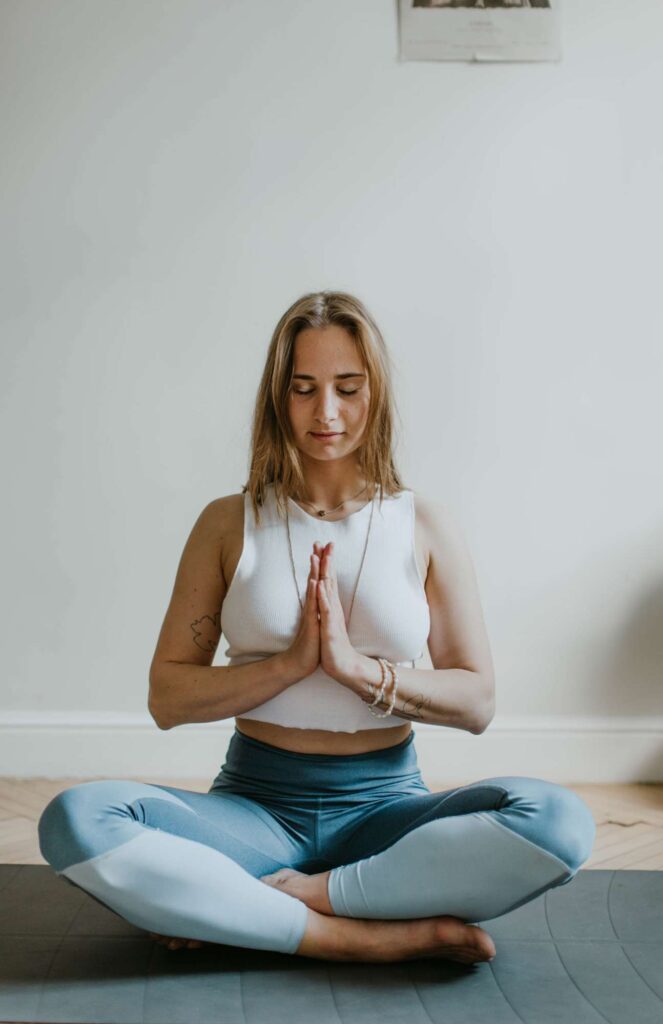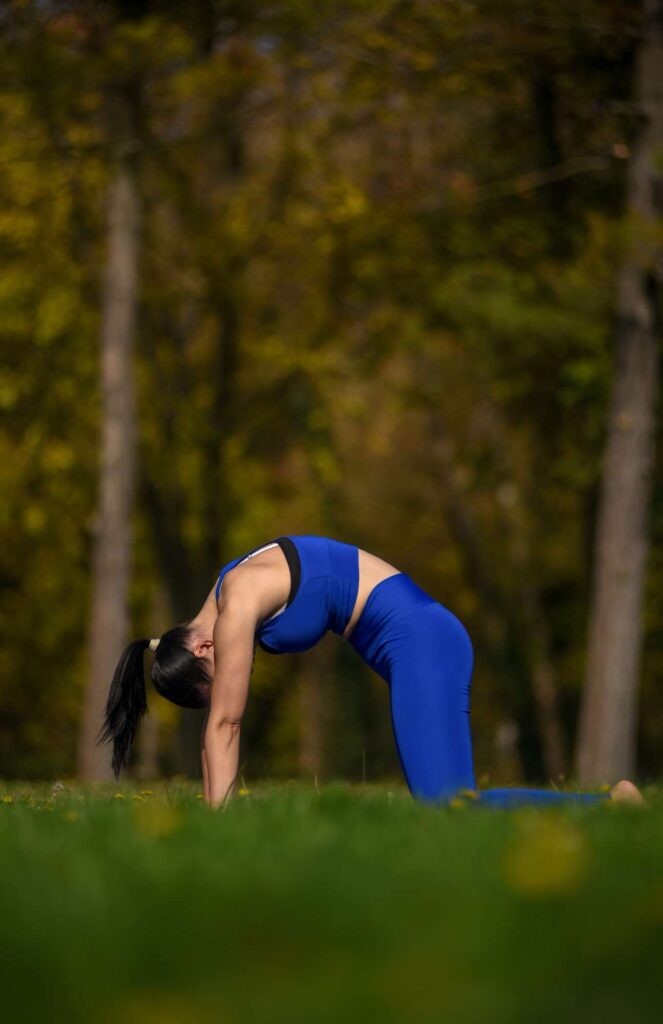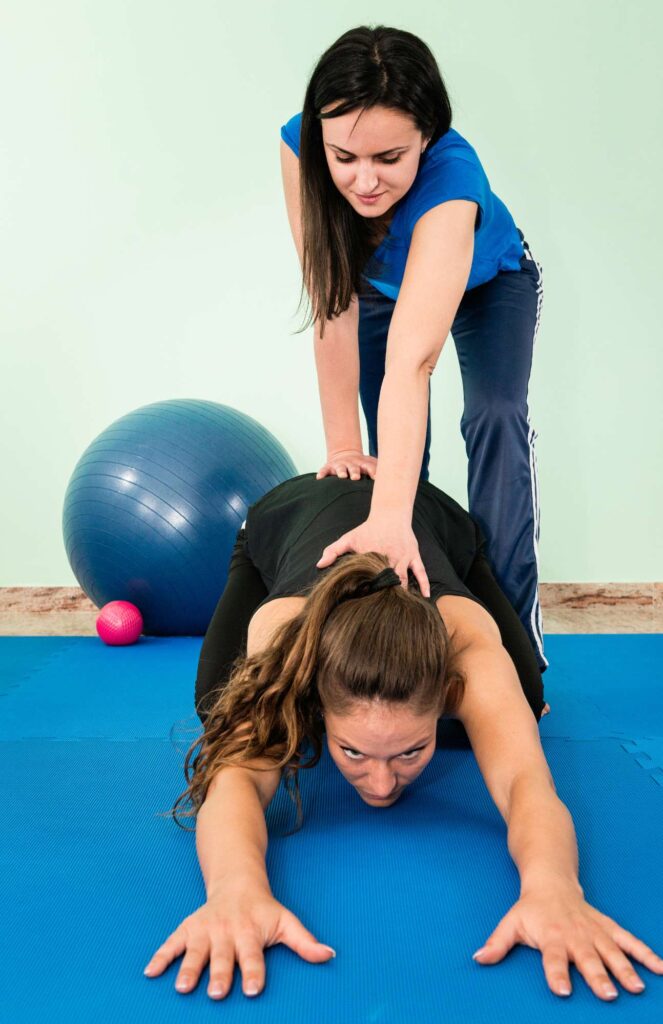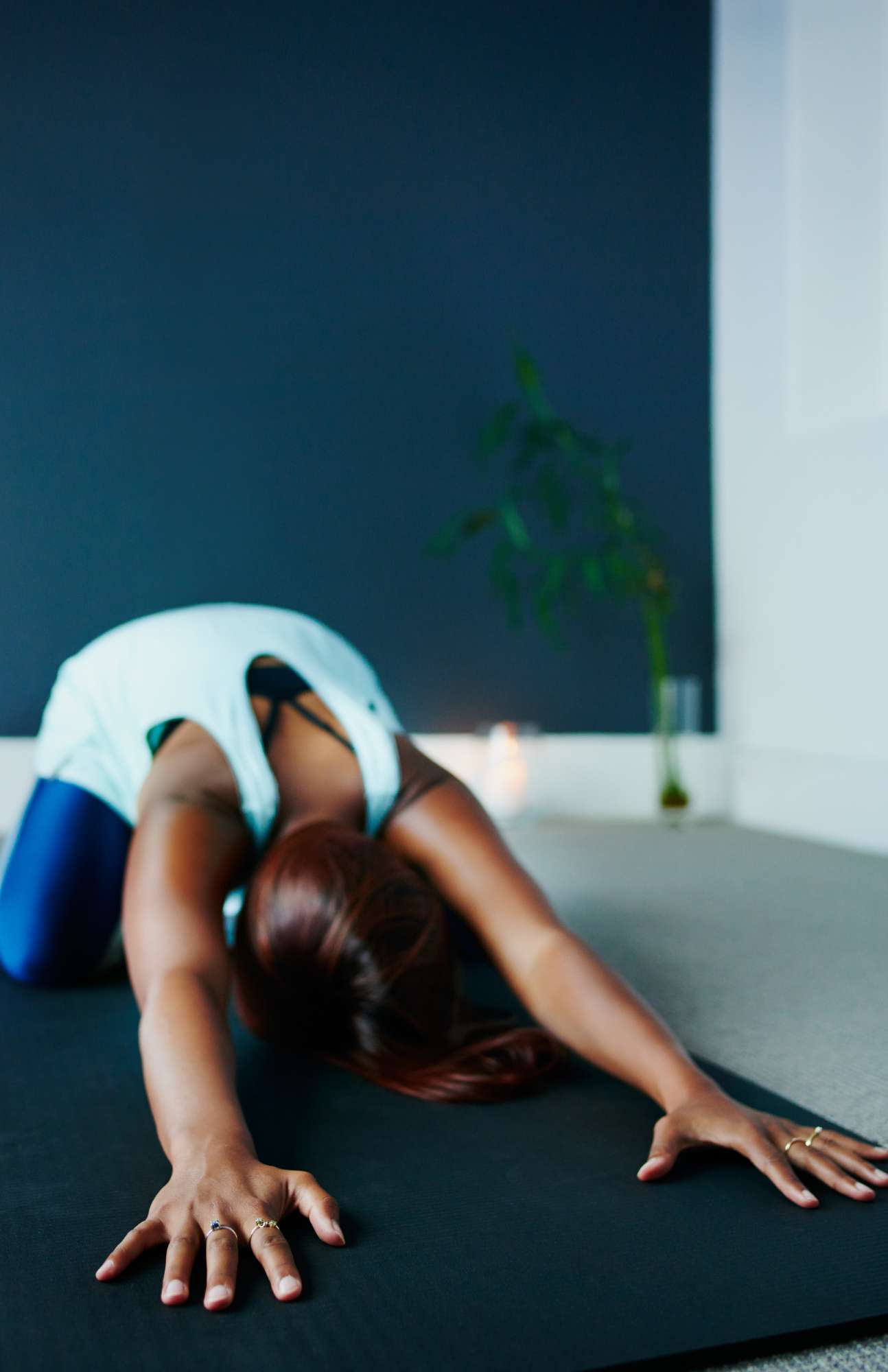Easy Yoga for Lower Back Pain Beginners Guide
Last Updated on January 22, 2024 by Dr. Tiffany Egan
Welcome to easy yoga for lower back pain beginners! If you’ve been suffering from chronic discomfort in your lower back, yoga can be a natural and effective way to alleviate pain and promote healing. In this comprehensive guide, we will explore a series of gentle yoga poses and stretches specifically designed to target the muscles, ligaments, and nerves in your lower back.
Whether you’re a yoga novice or have some experience, this guide is designed to help you safely and effectively practice yoga for lower back pain relief. Get ready to awaken your body’s natural healing abilities and regain strength and flexibility in your lower back. Let’s get started on your journey to a pain-free life through the power of yoga.
Table of Contents
Understanding lower back pain
Lower back pain is a common ailment that affects millions of people around the world. It can be caused by various factors such as muscle strain, poor posture, or even stress. Whatever the cause, living with lower back pain can be debilitating and affect your quality of life. Understanding the root cause of your lower back pain is the first step towards finding relief.
Yoga is a holistic and natural approach to alleviating lower back pain. It not only targets the physical symptoms but also addresses the mental and emotional aspects of pain. By practicing yoga regularly, you can strengthen your core muscles, improve flexibility, and release tension in your lower back. Additionally, yoga promotes relaxation and reduces stress, which can contribute to chronic pain.

How yoga can help alleviate lower back pain
Yoga is a gentle and low-impact exercise that can provide immense relief for those suffering from lower back pain. The practice of yoga focuses on stretching and strengthening the muscles in your back, abdomen, and hips, which can help improve your posture and alleviate pain. It also promotes proper alignment of the spine, reducing strain on the lower back.
Yoga for lower back pain beginners poses, or asanas, can specifically target the muscles that contribute to discomfort or pain. Poses such as Cat-Cow, Child’s Pose, and Downward Dog gently stretch the lower back muscles, releasing tension and increasing flexibility. Other poses like Bridge Pose and Cobra Pose strengthen the core and abdominal muscles, providing stability and support to the lower back.
Benefits of yoga for lower back pain relief
The benefits of practicing yoga for lower back pain relief are numerous. Not only does it provide immediate relief from pain, but it also has long-term benefits for your overall well-being. Regular yoga practice can:
- Strengthen the core muscles: A strong core provides support and stability to the lower back, reducing the risk of injury and pain.
- Improve flexibility: Tight muscles can contribute to lower back pain. Yoga helps increase flexibility, allowing for better range of motion and reduced pain.
- Promote proper posture: Poor posture can strain the muscles in the lower back. Yoga helps improve posture by strengthening the muscles and aligning the spine.
- Reduce stress: Chronic stress can exacerbate lower back pain. Yoga promotes relaxation and reduces stress, leading to a decrease in pain levels.
- Enhance body awareness: Yoga is one of the best ways to encourage mindfulness and body awareness, helping you identify and address any imbalances or areas of tension in your body.

Preparing for a yoga practice
Before beginning a yoga practice for lower back pain relief, it is important to prepare yourself physically and mentally. Here are a few steps to get started:
- Consult with a healthcare professional: If you have any underlying medical conditions or injuries, it is advisable to consult with a healthcare professional before starting a yoga practice.
- Find a qualified yoga instructor: Look for a certified yoga instructor who has experience working with individuals with lower back pain. They can guide you through the correct alignment and modifications for your specific needs.
- Create a safe space: Find a quiet and comfortable space where you can practice yoga without any distractions. Clear the area of any objects that may cause injury.
- Gather the necessary equipment: You will need a yoga mat, comfortable clothing, and any props recommended by your instructor, such as blocks or straps.
Easy yoga poses for lower back pain relief
Now that you are ready to begin your yoga practice, let’s explore some basic poses that can help alleviate lower back pain:
- Cat-Cow Pose: Start on your hands and knees, with your hands aligned under your shoulders and knees under your hips. Inhale as you arch your back and lift your chest (Cow Pose), and exhale as you round your spine and tuck your chin towards your chest (Cat Pose). Repeat this sequence for several rounds, moving with your breath.
- Child’s Pose: Begin by kneeling on your mat, then sit back on your heels and lower your torso towards the ground, resting your forehead on the mat. Extend your arms forward or alongside your body. Breathe deeply and relax into the pose, feeling a gentle stretch in your lower back.
- Downward Dog Pose: Start on your hands and knees, then tuck your toes and lift your hips up towards the ceiling, creating an inverted V-shape with your body. Press your hands firmly into the mat and engage your core muscles. Hold the pose for several breaths, feeling a stretch in your hamstrings and lengthening of your spine.
Yoga for lower back pain beginners modifications
As a beginner, it is important to listen to your body and make modifications as needed. Here are some modifications and variations for the basic yoga poses mentioned earlier:
- Cat-Cow Pose: If you have wrist pain or find it difficult to balance on your hands and knees, you can perform this pose while seated in a chair. Sit with your feet flat on the ground in the neutral position, hands resting on your thighs. Inhale as you arch your back and lift your chest, and exhale as you round your spine.
- Child’s Pose: If sitting back on your heels is uncomfortable, you can place a bolster or folded blanket between your thighs and calves for support. This will help relieve pressure on your knees and ankles.
- Downward-facing Dog Pose: If you have tight hamstrings or find it difficult to straighten your legs fully, you can bend your knees slightly in this pose. This modification will allow you to focus on lengthening your spine and opening your shoulders.

Incorporating props for added support
Props can be extremely helpful in providing added support and comfort during your yoga practice. Here are a few props that can be beneficial for individuals with lower back pain:
- Yoga blocks: Blocks can be used to modify poses and make them more accessible. For example, if you find it difficult to touch the ground performing forward folds, you can place a block under your hands for support.
- Yoga strap: A strap can be used to extend your reach and deepen your stretches. For instance, if you have tight hamstrings and are unable to reach your toes in a seated forward fold, you can loop a strap around the soles of your feet and hold onto the ends.
- Bolsters and blankets: These props can provide extra cushioning and support during restorative poses. Placing a bolster, thick towel or folded blanket under your knees or lower back can help relieve pressure and reduce discomfort.
Developing a regular yoga practice
To experience the full benefits of yoga for lower back pain relief, it is important to develop a regular practice. Here are some tips to help you establish a routine:
- Set aside dedicated time: Schedule specific time slots for your yoga practice and treat it as a priority. Even 10 to 15 minutes of yoga every day can make a significant difference in managing your lower back pain.
- Find a yoga teacher that you align with: There are various styles and approaches to yoga, so it is important to find a teacher that resonates with you. Attend different classes or workshops to explore different styles and teachers until you find the one that feels right for you.
- Take breaks when needed: If you experience any discomfort or pain during a pose, take a break or come out of
- Start slow and gradually increase intensity: As a beginner, it is important to start with gentle and beginner-friendly poses. Remember to take some deep breaths, focus on proper alignment and listen to your body. Over time, you can gradually increase the intensity and duration of your practice.
- Be consistent: Consistency is key when it comes to yoga. Aim to practice at least three to four times a week to see noticeable improvements in your lower back pain.
Other lifestyle changes to complement yoga for lower back pain relief
In addition to practicing yoga, there are other lifestyle changes you can make to complement your journey towards lower back pain relief. Here are a few suggestions:
- Maintain a healthy weight: Excess weight can put strain on your lower back. By maintaining a healthy weight through a balanced diet and regular exercise, you can reduce the load on your back and alleviate pain.
- Stay Hydrated: Drinking water is important for joint health and overall wellness.
- Improve your posture: Pay attention to your posture throughout the day, whether you are sitting, standing, or walking. Practice good posture by aligning your ears, shoulders, and hips in a straight line.
- Stay active: Incorporate other forms of exercise, such as walking or swimming, into your routine. Avoid a sedentary lifestyle. Our bodies need to move. Physical activity is a very effective way to strengthen your muscles and maintain flexibility, which can contribute to lower back pain relief.
- Practice stress management techniques: Chronic stress can exacerbate lower back pain. Explore stress management techniques such as meditation, deep breathing exercises, mind-body therapy or engaging in activities you enjoy.
Precautions and tips for practicing yoga safely
While yoga can be beneficial for lower back pain relief, it is important to practice safely and take precautions to prevent injury. Here are some tips to keep in mind:
- Listen to your body: Pay attention to any discomfort or pain during your practice. Just like any exercise program, if a pose feels too challenging or causes pain, modify or skip it altogether.
- Warm-up before your practice: Prior to starting your yoga practice, perform gentle warm-up exercises to loosen up your muscles and prepare your body for movement.
- Avoid overstretching: It is important to stretch within your limits and not push yourself too far. Overstretching can lead to muscle strain or injury.
- Seek guidance from a qualified instructor: If you are new to yoga or have specific concerns related to your lower back pain, seek guidance from a certified yoga instructor who can provide personalized modifications and guidance. They also can tailor specific yoga exercises for your needs.

Recommended resources for beginners
If you are a beginner looking to start a yoga practice for lower back pain relief, here are some recommended resources to help you get started:
- Online yoga classes: Many reputable yoga websites offer online classes and yoga programs specifically tailored for beginners. Look for classes that focus on yoga for lower back pain beginners or gentle (yin) yoga.
- Yoga books: There are numerous books available that provide detailed instructions and illustrations of the best yoga poses. “Yoga for Back Pain” by Loren Fishman and Carol Ardman is a highly recommended resource.
- Yoga apps: There are several yoga apps available that offer beginner-friendly classes and a step-by-step guide for different practices. Some popular options include “Down Dog,” “Yoga Studio,” and “Glo.”
Seek Professional Medical Advice from a physical therapist, chiropractor or medical doctor if pain is severe or persists. Physical therapy can tailor a yoga based stretching routine for your particular needs. Chiropractic care may be a good idea if you are concerned with alignment and if you are experiencing chronic lower back pain.
Conclusion
Lower back pain can be a constant source of discomfort and frustration. However, by incorporating yoga for lower back pain beginners into your daily routine, you can find relief and improve your overall well-being. Remember to start slow, listen to your body, and seek guidance from a qualified instructor. With consistency and dedication, you can say goodbye to lower back pain and embrace a life of comfort and vitality.
Note: Always consult with a healthcare professional before starting any new exercise or yoga program, especially if you have pre-existing medical conditions or injuries.







One Comment
Comments are closed.